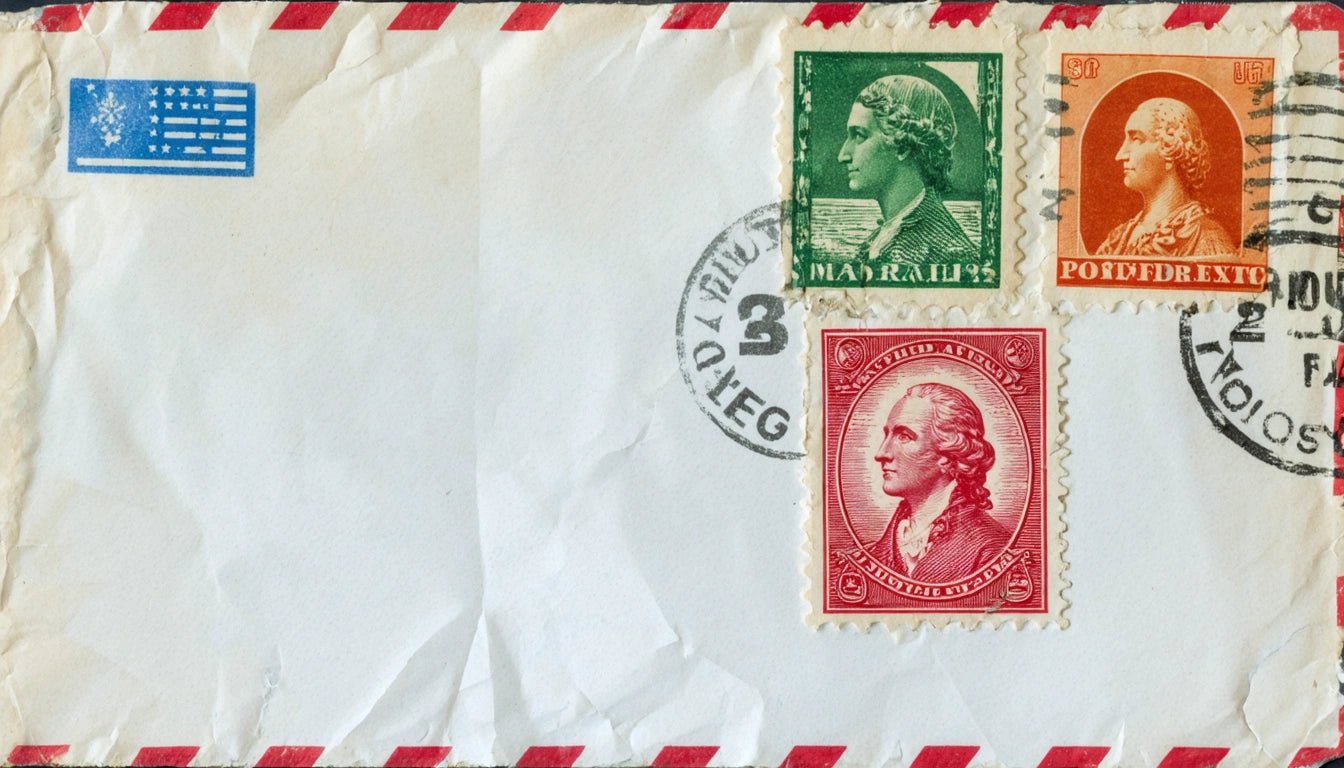Table of Contents
Determining the Right Number of Stamps for Your Mail
Figuring out how many stamps to use can be confusing, especially when mailing items of varying weights and sizes. Whether you're sending a simple letter or a package containing multiple sheets of paper, understanding postage requirements is essential to ensure your mail reaches its destination without delay or additional costs.
Understanding Postage Basics
The United States Postal Service (USPS) bases postage rates primarily on weight, size, and destination. A standard First-Class Mail stamp (currently valued at 68 cents as of 2024) covers letters weighing up to one ounce. For each additional ounce, you'll need to add an additional ounce stamp (currently 24 cents).
According to this guide on understanding postage costs, standard-sized envelopes (up to 6â…› inches by 11 ½ inches) with uniform thickness qualify for letter rates, while larger or irregular items may require additional postage.
How Weight Affects Stamp Requirements
Letters and Standard Envelopes
When determining how many stamps to use, weight is the primary factor. Here's a general guideline:
- Up to 1 oz: 1 Forever stamp
- 1-2 oz: 1 Forever stamp + 1 additional ounce stamp
- 2-3 oz: 1 Forever stamp + 2 additional ounce stamps
- 3-3.5 oz: 1 Forever stamp + 3 additional ounce stamps
If you're wondering how many pieces of paper per stamp, a standard sheet of 20 lb paper weighs approximately 0.16 ounces. This means you can typically mail about 5-6 sheets of paper with a single Forever stamp before needing additional postage.
Bubble Mailers and Padded Envelopes
For items that require protection, padded envelopes and bubble mailers are popular choices. These typically weigh more than standard envelopes even when empty, so you'll need to account for both the weight of the contents and the packaging itself.
Paper Thickness and Stamp Calculation
Paper thickness significantly impacts weight and therefore postage requirements. Understanding paper thickness can help you better estimate how many stamps to use.
Paper weight is typically measured in pounds (lb) or grams per square meter (gsm):
- Standard copy paper (20 lb/75 gsm): ~0.16 oz per sheet
- Cardstock (65 lb/176 gsm): ~0.4 oz per sheet
- Heavy cardstock (110 lb/300 gsm): ~0.7 oz per sheet
For specialty papers like those used in premium packaging and presentation materials, weights can vary significantly, requiring precise measurement for accurate postage calculation.
Special Mail Considerations
Oversized or Non-Machinable Items
Mail that cannot be processed through automated equipment requires additional postage. This includes:
- Rigid items
- Unevenly weighted items
- Square or unusually shaped envelopes
- Envelopes with clasps or string ties
These items typically incur a non-machinable surcharge on top of the regular postage rate, requiring at least one additional stamp.
International Mail
For international destinations, postage rates differ significantly. A Global Forever stamp (currently valued at $1.55) covers a 1-ounce letter or postcard to any international destination. Weight increments and rates vary by country and service class.
When shipping internationally, it's particularly important to verify the correct postage as underpaid international mail may be returned or subject to postage due charges collected from the recipient.
Tools and Resources for Accurate Postage
To eliminate guesswork when determining how to know how many stamps to use, several tools are available:
- Postal Scale: A small investment in a digital postal scale can save money in the long run by ensuring you use exactly the right amount of postage.
- USPS Postage Calculator: Available on the USPS website, this tool provides precise postage requirements based on weight, size, and destination.
- Postage Meters: For businesses that send high volumes of mail, postage meters print the exact amount of postage needed.
This guide on paper weight can help you estimate the weight of your mailing without a scale in a pinch.
Smart Mailing Practices for Cost Efficiency
To optimize your mailing costs and ensure your mail arrives without issues, consider these practices:
- Use standard envelope sizes whenever possible to qualify for letter rates
- Consider digital alternatives for large documents
- For regular mailings, invest in a variety of stamp denominations
- Use online postage services that allow you to print exact postage amounts
- Consider USPS Flat Rate options for heavier items
Understanding how many stamps to use isn't just about getting your mail delivered; it's also about cost efficiency. Overpaying for postage adds up over time, while underpaying can result in returned mail and delays.
By taking the time to weigh your mail and understand basic postage requirements, you can ensure your correspondence reaches its destination efficiently while managing your mailing budget effectively.



















